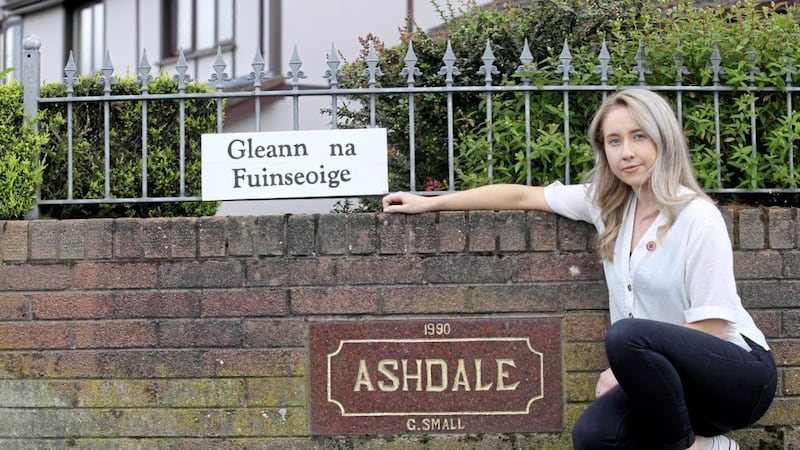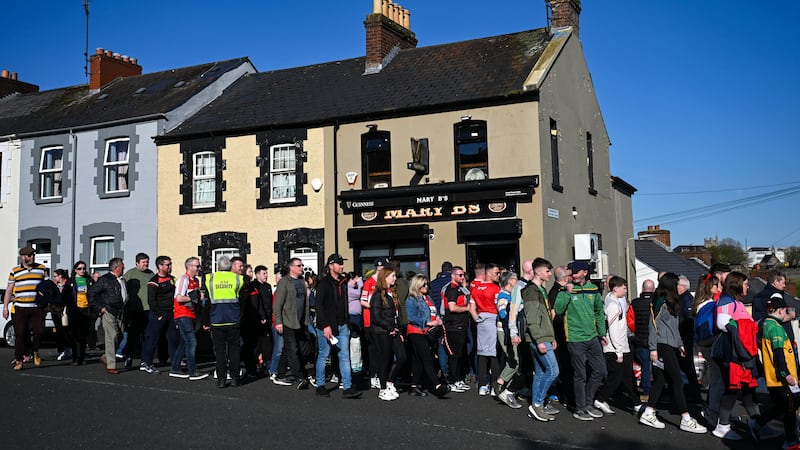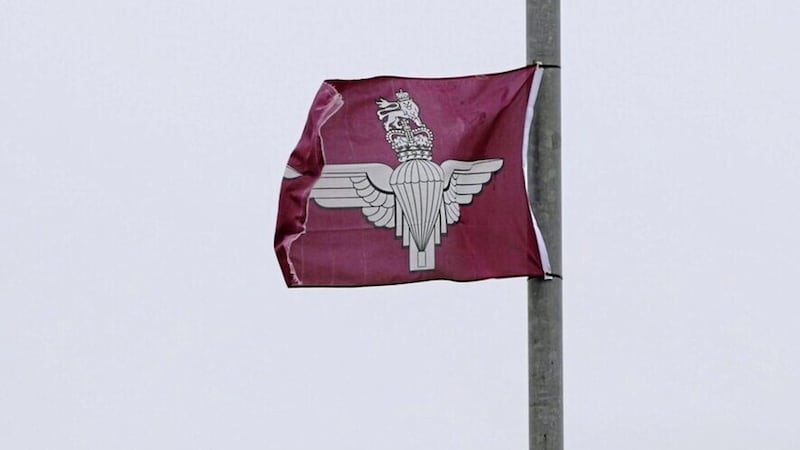Many councils in Northern Ireland have a policy of erecting Irish language street signs where a majority of residents support it.
In February last year, Antrim and Newtownabbey Borough Council responded to one such request by ruling that street signs must be in English only.
This policy, described as “Donald Trump-like” by pressure group the Committee for the Administration of Justice (CAJ), was rescinded last September following a legal challenge. However, it remains unclear what has replaced it.
The council is now threatening to prosecute a Randalstown woman under advertising regulations after an Irish language sign was erected on the garden fence of her property, above the official street sign in a private development.
Irish language groups have reacted with outrage, Sinn Féin has demanded the council agree a proper signage policy “immediately” and CAJ says the prosecution could be discriminatory if the same approach “is not applied consistently to other forms of cultural expression.”
One sign that could be placed around Randalstown might read ‘Activists at Work’. As the issue is brought to a head, the comparisons being made are revealing. CAJ’s reference to ‘other forms of cultural expression’ sounds like a challenge to the council to prosecute the numerous legal breaches around bonfires.
The Irish News has made a comparison with some unionist support for ‘Soldier F’ banners. The exact parallel of those banners is surely with dissident republican so-called justice campaigns.
From a unionist perspective, the real parallel with the Randalstown sign is simple and obvious: it is just like putting a flag out.
The difference between a sign on a garden fence or in the street is just like the difference between a flag on a house or on a lamppost.
Gaeilgeoiri might say this is a false comparison because Irish belongs to both communities. Of course, the same is said about the Tricolour.
Flag-flying in residential areas has traditionally been a unionist practice, eschewed by nationalists.
If nationalists are to take up their own version, there are lessons to be learned from the experience of their neighbours.
Over the past two decades, flags have largely disappeared from houses in unionist areas - a process that began as the Drumcree dispute turned people off July celebrations. Loyalists responded to this passive protest with some initial intimidation of householders but once that proved too much of a task they switched to putting unprecedented numbers of flags on lampposts. The first mass incidents occurred in 2000, beginning appropriately enough in Newtownabbey, then driven forward by loyalist rivalries.
This may not have much direct language-politics equivalent. However, seeking to make signage official does echo the transfer of flags from houses to lampposts. I lived in a neighbourhood where this occurred during Drumcree and was struck by how flying a flag went from something you did to something that was done to you, complete with dubious claims of ‘majority support’.
It killed a popular tradition stone dead and replaced it with cynical resentment. The prospect of Irish escaping that effect appears unlikely, not least because there are stand-alone reasons why people might not want bilingual signage on their streets.
As with flags, bilingual signs - involving Irish or Ulster-Scots - mark an area out as single identity. You may argue the rights and wrongs of that but it is a fact and a perception that creates its own reality.
Most people in Northern Ireland aspire to live in mixed areas, if only because those areas are seen as more affluent and middle-class.
This is particularly true of new developments. Reporting on flag disputes over the past decade, a phenomenon has been observed where residents insist a development is mixed although all evidence is that everyone is from a unionist background.
An absence of flags enables this mindset, while the appearance of flags shatters it. Bilingual signs will have the same effect.
Private housing is by far the commonest type of housing in Northern Ireland, yet there is surprisingly little research on what happens when it is branded as single identity.
Prioritising bourgeois property over cultural expression is never in academic fashion.
But what research exists shows people believe flags reduce house prices, which must be a self-fulfilling prophecy. People are also less likely to use nearby shops and amenities, causing wider economic damage.
Crucially, this is not about one community boycotting another through prejudice. Union flags cause unionists to do this to themselves.
What reason is there to believe branding an area would not have a similar impact on nationalists?
newton@irishnews.com









